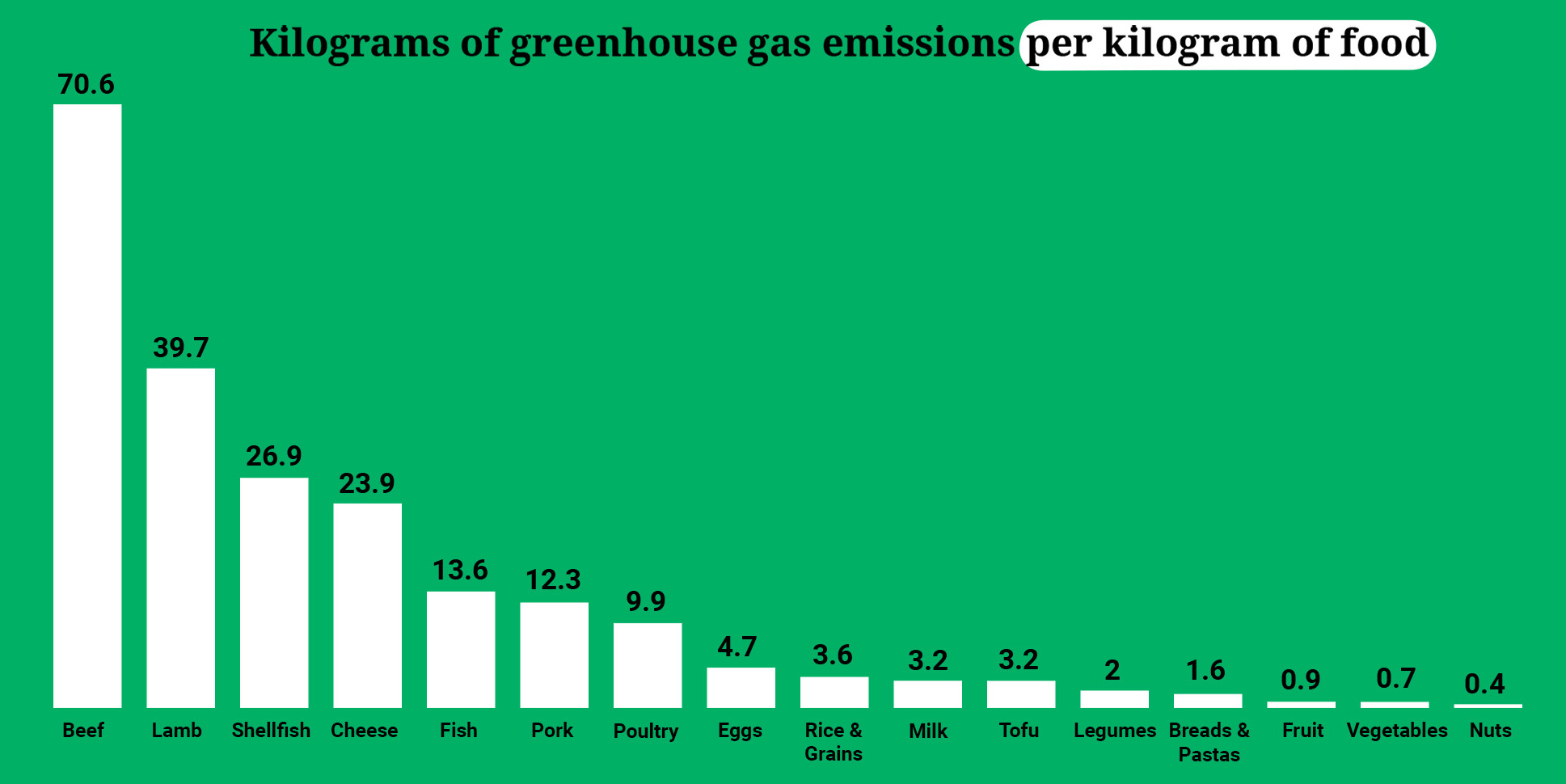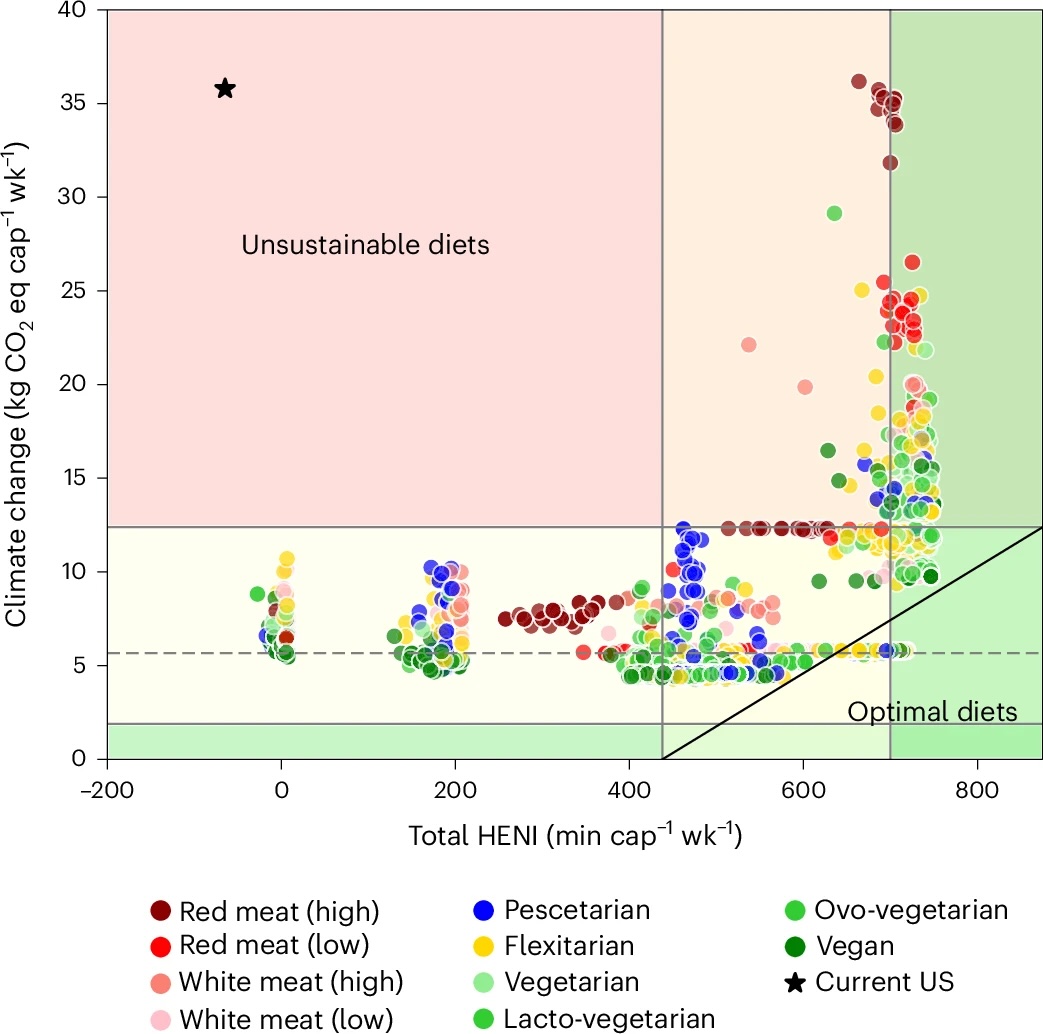When it comes to eating meat, it sometimes seems impossible to strike a balance between doing the right thing for your body, and for the planet. Now, a team of environmental scientists has calculated a sweet spot that we can actually write on our shopping lists.
"Most people now realize that we should eat less meat for both environmental and health reasons. But it's hard to relate to how much 'less' is and whether it really makes a difference in the big picture," says lead author Caroline Gebara, an environmental scientist at the Technical University of Denmark.
That's why she and her team calculated a tangible figure – 255 grams (9 ounces) of poultry or pork per week – that people can factor into stocking their fridges.
That's roughly two chicken breasts. It's also six to ten times less meat than the average US or European citizen ate in 2021.
And the study suggests red meat – especially beef – cannot be part of an environmentally sustainable diet. That's probably because a lot of land must be cleared to farm animals like cows and sheep, which then emit methane (a greenhouse gas 28 times more potent than CO2) and nitrous oxide (270 times more potent than CO2) through their waste and feed crops.
 Different food sources have different environmental impacts. Note: Emissions are measured in kilograms of carbon dioxide equivalents, which takes into account not only carbon dioxide but also other greenhouse gases, such as methane and nitrous oxide. (United Nations)
Different food sources have different environmental impacts. Note: Emissions are measured in kilograms of carbon dioxide equivalents, which takes into account not only carbon dioxide but also other greenhouse gases, such as methane and nitrous oxide. (United Nations)"Our calculations show that even moderate amounts of red meat in one's diet are incompatible with what the planet can regenerate of resources based on the environmental factors we looked at in the study," Gebara says.
"However, there are many other diets – including ones with meat – that are both healthy and sustainable."
Humans have been eating animals and their byproducts for at least 2.6 million years, and we're not going to stop any time soon. But our hunger for meat is, to put it lightly, a bit out of control.
The environmental footprint of our livestock comes largely from greenhouse gases emitted directly by the animals, damage to the land used to raise them, and the fuel burned in transporting them, turning them into meat, and getting that meat to our plates.
One study estimated that greenhouse gases could stabilize for 30 years if animal agriculture, as it exists today, was rapidly phased out. That's an unlikely scenario, but it gives a sense of the industry's impact on our world.
With all that in mind, Gebara and her team conducted literature reviews to identify constraints for both healthy diets – resulting in 32 key nutritional requirements – and ones which are environmentally sustainable – based on a number of key thresholds for planetary sustainability.
All this came together to form a model that identified the amounts of different kinds of foods an individual could eat, per week, without putting undue strain on the planet's resources.
 The average US diet does not score well for either human health (HENI – Health Nutrition Index) or environmental sustainability ( climate change contribution). (Gebara et al., Nature Food, 2025)
The average US diet does not score well for either human health (HENI – Health Nutrition Index) or environmental sustainability ( climate change contribution). (Gebara et al., Nature Food, 2025)"For example, our calculations show that it's possible to eat cheese if that is important to you, while at the same time having a healthy and climate-friendly diet," Gebara says. "The same is true for eggs, fish, and white meat, but the premise is of course that the rest of your diet is then relatively healthy and sustainable. But it doesn't have to be either-or."
Models like this can really oversimplify different people's dietary needs and personal circumstances, which the authors acknowledge. The food characteristics used for the nutritional aspects of this study are based on US data, so they're more of a proxy for high-income countries than globally representative.
It's also difficult to capture all the many and varied impacts that food systems have across the world in a study like this. The model also relies on impacts of food production across one year remaining consistent, which is not the case in the real world. Technologies can change environmental impacts of certain foods, so this model will need to be updated over time.
"Our study focused on the biophysical limits of human nutrient intake and environmental impacts, but overlooked other aspects such as accessibility, affordability, and cultural acceptance," the authors write.
"Achieving truly sustainable diets requires universal availability, which must be supported by policymakers at all levels."
This research was published in Nature Food.

.jpg) 3 hours ago
1
3 hours ago
1
 English (US)
English (US)